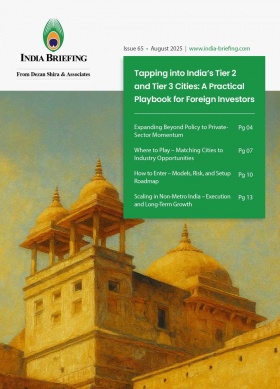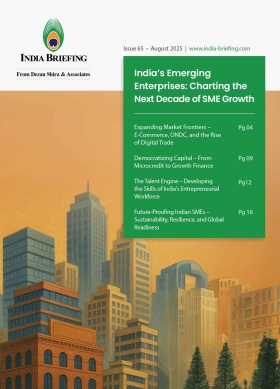Eli Lilly’s Mounjaro Tops India’s Drug Sales – What It Reveals About the Country’s Health Market
In a striking new milestone, Eli Lilly’s weight-loss therapy Mounjaro (tirzepatide) became India’s top-selling drug by value in October 2025, overtaking GSK’s antibiotic Augmentin, according to Reuters citing data from research firm Pharmarack. Mounjaro generated INR 1 billion (US$11.38 million) in October sales – surpassing Augmentin’s INR 800 million – despite vastly lower unit sales (85,000 units versus 5.8 million for Augmentin).
This performance cements Mounjaro’s rapid ascent from its March 2025 India launch to national market dominance within seven months, signaling profound shifts in India’s healthcare and consumer landscape. By end-October, Mounjaro had accumulated INR 3.33 billion in revenue, and its consumption was reportedly 10 times higher than rival Wegovy (semaglutide), highlighting the scale and pace of India’s evolving chronic-metabolic care market.
Also Read: Registering a Pharmaceutical Company in India: How to Obtain CDSCO & Drug License Approvals
Demand for obesity drugs in India
India has long been called the “diabetes capital,” but the co-epidemic of obesity is accelerating across age groups. National data show rapid increases in overweight/obesity prevalence among adults and worrying trends among adolescents and even under-fives.
Demand is deep – and widening – beyond diabetes
Tirzepatide’s rise from a March launch to the top-selling drug in October 2025 reveals how three demand layers are converging:
- Clinical need: Patients with type-2 diabetes and obesity comorbidities are seeking therapies with strong HbA1c and weight-loss efficacy, and better cardiometabolic outcomes.
- Consumer aspiration: Urban middle-class awareness of global wellness and body-weight management trends has normalized pharmacologic intervention.
- Provider confidence: Endocrinologists and diabetologists familiar with global GLP-1/GIP trials are prescribing to high-risk profiles benefiting from dual glucose and weight control.
The GLP-1 market expanded ~27 percent year-on-year to INR 6.06 billion by July 2025 and is forecast to grow at >34 percent CAGR through 2030 – nearly double the global rate – reflecting structural rather than faddish demand.
Reuters’ October update further underlines this demand depth: while Mounjaro sold only 85,000 units in October, its high price point pushed value sales above all other drugs in India. Even more telling, its dose-based consumption outpaced Wegovy tenfold, showcasing sustained appetite for advanced metabolic therapies among both prescribers and patients.
Access barriers aren’t stopping early adopters – but value optics matter
Even at premium price points, Mounjaro’s sales demonstrate that affordability is relative when outcomes are visible and value is perceived. Patients facing diabetes or obesity-related complications see long-term health costs – hospitalizations, lost productivity – as outweighing drug expense.
Employers in metros are experimenting with partial coverage of chronic-disease therapies in wellness plans. Sustained growth, however, hinges on financing innovation (tiered pricing, employer coverage, telemedicine bundles) and reliable supply – areas where Eli Lilly’s India manufacturing investments could become pivotal.
Also Read: Unlocking India’s Wealth: 2025 Per Capita Income Insights
Regulation is (cautiously) enabling, but indications and labeling still matter
India’s regulator cleared tirzepatide for type-2 diabetes ahead of 2025, with obesity/weight-loss indications and multi-dose pen formats under staggered review. Novo Nordisk’s semaglutide also gained regulatory traction in 2025 (Wegovy – June and Ozempic – September), with patent expiry in March 2026 expected to open the door for Indian generics.
This sequencing – diabetes before obesity – affects coverage decisions, patient counseling, and provider adoption, shaping the pace of mainstream integration.
The GLP-1 drug race: Lilly vs Novo Nordisk
By mid-2025, semaglutide held ~two-thirds of India’s GLP-1/weight-loss market, with tirzepatide at ~8 percent and climbing. Speaking to the media, Sheetal Sapale, Pharmarack’s Vice President (Commercial), told that Mounjaro’s consumption in India by volume was ten times higher than Wegovy’s in October; Lilly sold 262,000 tirzepatide doses compared to Novo’s 26,000.
The rivalry between Lilly and Novo Nordisk has made India a key battleground for global pharma players chasing a market projected to exceed US$150 billion globally by 2030. Novo faces pressure from its impending patent cliff, prompting Indian drugmakers to prepare semaglutide generics that could enter post-2026 and reshape pricing.
Lilly, meanwhile, is deepening its foothold: it recently partnered with Indian major Cipla to market Mounjaro under a separate brand name, likely to expand distribution reach and tap into local sales expertise.
Expect competitive intensity to center on:
- Supply chain resilience: Cold-chain and pen-format logistics.
- Device UX and adherence tools.
- Real-world Indian data: Local evidence on efficacy and safety.
- Hybrid market tiers: Premium branded vs. affordable generic formulations.
Local manufacturing and pharma investment trends
Eli Lilly’s US$1 billion investment in India, including a manufacturing and quality hub in Hyderabad, is both a hedge against global supply bottlenecks and a bid to anchor local cost-efficient capacity. This aligns with India’s pharma ambitions to move from generics toward complex biologics and device-integrated therapies.
October’s data emphasizes why this capacity is critical: with consumption rising exponentially, local production will be essential to ensure steady supply and prevent the stock-outs that have plagued GLP-1 markets elsewhere.
Implications for India’s health-market evolution
- From acute to chronic-metabolic management: Mounjaro’s ascent underscores India’s pivot toward long-term, outcomes-focused care for obesity, diabetes, and cardiovascular disease.
- Willingness to pay for measurable results: Urban and employer-backed segments are demonstrating readiness to invest in therapies tied to tangible outcomes such as weight loss or HbA1c reduction.
- The “brand + program” edge: Pharmaceutical companies that combine their drug brand with a supportive care program will have a competitive advantage. For example, structured patient onboarding (initiation), dose adjustment plans (titration), and digital tools for follow-up or monitoring like apps, SMS reminders, or telehealth platforms that track progress, send alerts, and encourage adherence.
- Local data as currency: Pharmaceutical originator companies will leverage Indian real-world clinical data to justify price premiums amid generic entry. As generics drive prices down, originators will rely on India-specific real-world performance data to defend their brand reputation, sustain market share, and maintain a pricing edge.
- Regulation and labeling: Stepwise approvals (diabetes first, obesity second) will dictate market rollout pace and payer coverage.
Risks for drugmakers targeting weight-loss market
- Supply constraints: Surging demand could still outpace local capacity.
- Affordability cliffs: Without payer participation, usage may remain urban-focused.
- Indication misuse: “Cosmetic” use risks reputational backlash.
- Counterfeiting: High-value therapies are prone to grey markets.
- Generic shocks: Semaglutide generics could fragment the market post-2026.
Practical implications for stakeholders
- For hospitals and clinics: Build multidisciplinary metabolic-care models.
- For employers and insurers: Pilot outcome-linked coverage schemes.
- For pharma: Localize manufacturing, partner with digital health players, and generate India-specific data.
- For policy makers: Modernize obesity-care guidelines and evaluate cost-effectiveness pilots for high-risk cohorts.
Also Read: Incorporating a Healthcare Business in India: NABH Standards, FDI, and Compliance
The road ahead: From blockbuster to backbone
Mounjaro’s journey from launch to India’s No. 1 drug by value within seven months is not just a commercial triumph – it’s a signal of systemic transformation. India’s metabolic-care landscape is evolving toward earlier intervention, integrated programs, and payer-linked financing.
Two reinforcing forces will sustain this shift:
- Local capacity build-out – anchored by Lilly’s India investments.
- Epidemiological and economic pressure – as lifestyle diseases escalate in an urban, younger workforce.
By 2027–2030, India’s obesity and diabetes care ecosystem could look markedly different: programmatic, data-driven, and outcomes-focused – where drugs like Mounjaro are not just blockbusters but pillars of chronic-disease management.
Interested in India’s healthcare and pharmaceutical investment opportunities? Contact Dezan Shira & Associates to understand regulatory requirements, partnership structures, and market-entry strategies across India’s fast-growing life sciences sector. Get in touch with our India team at: India@dezshira.com
About Us
India Briefing is one of five regional publications under the Asia Briefing brand. It is supported by Dezan Shira & Associates, a pan-Asia, multi-disciplinary professional services firm that assists foreign investors throughout Asia, including through offices in Delhi, Mumbai, and Bengaluru in India. Dezan Shira & Associates also maintains offices or has alliance partners assisting foreign investors in China, Hong Kong SAR, Vietnam, Indonesia, Singapore, Malaysia, Mongolia, Dubai (UAE), Japan, South Korea, Nepal, The Philippines, Sri Lanka, Thailand, Italy, Germany, Bangladesh, Australia, United States, and United Kingdom and Ireland.
For a complimentary subscription to India Briefing’s content products, please click here. For support with establishing a business in India or for assistance in analyzing and entering markets, please contact the firm at india@dezshira.com or visit our website at www.dezshira.com.
- Previous Article Delhi Shops and Establishments Act: Conditions for Extended Business Hours
- Next Article









